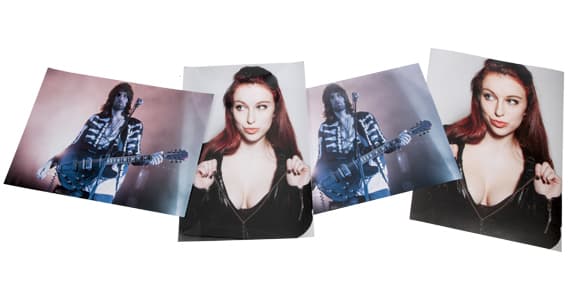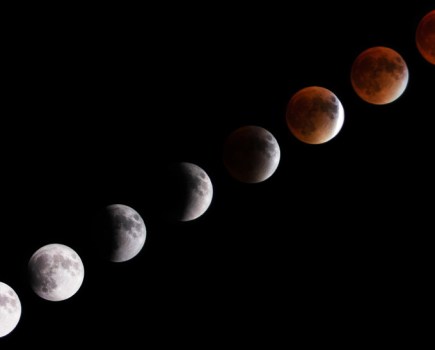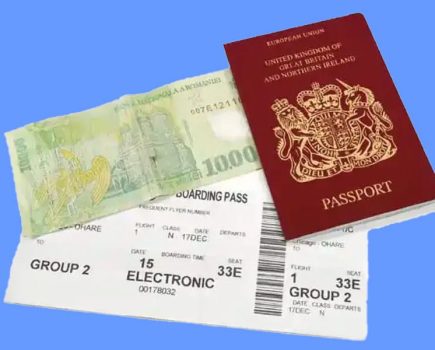Don’t leave your images languishing on your computer. We suggest ways you can show them off instead
Never allowing your images beyond the confines of your hard drive is not doing them justice – to get the most out of them requires physical form, perhaps hung on a wall or printed in a book.
The most popular method of displaying an image is still a photographic print. For an image worthy of a place on a wall, either for personal enjoyment or an exhibition, a large format is best – and for anything bigger than A4, it is worth using a specialist photo lab. Large prints will make every detail of your image stand out, so it is important to ensure that it has been properly edited and adjusted.
It is also necessary to check that your image has the resolution required to print at your chosen size. For A3 or larger, we recommend at least 3508×2480 (around 9 million) pixels, but even at A3 the image will benefit from up to 17 million pixels. As prints further increase in size, the viewing distance also increases, so higher resolutions are not necessary. Billboard prints, for example, often look very low in quality when viewed close up.
We have included a range of different paper types and coatings from four professional photo labs to demonstrate the range of options available for prints.
Prints
Large-format prints need not be expensive – many firms offer a selection of affordable services.

1. theprintspace
From £15.20 (A2 size)
Theprintspace is a London-based print house offering prints, mounting and framing with a wide range of size and material options. There is a choice of C-type prints, giclée prints and CMYK proofs (for professionals making final checks). The C-type prints are true photographic paper prints in either Fujifilm Gloss, Matt and Flex finishes, along with Kodak metallic finish paper.
We printed our images in A2 size using the Fuji Gloss and Flex finishes, costing £18.24 and £23.70 respectively (plus delivery). The former is Fuji Crystal Archive paper with a gloss finish, giving bright and punchy images with very high levels of sharpness. This is great general use, especially if you’re not intending to put it behind glass.
Fuji Flex is a super-gloss paper with somewhere between a gloss and a metallic effect, giving extra punch.
2. Peak Imaging
From £11.80 (A2 size)
Based in Sheffield, Peak Imaging offers a range of printing services for film and digital users, from film processing to mounting and even mouse mats. The professional photographic print range includes Fuji Crystal Archive in Matt and Gloss finishes, Fuji Flex high gloss, Kodak Endura Metallic finish and Canvatex canvas wraps.
Here we printed out images at A2 with the Fuji Gloss and Kodak Endura Metallic paper, costing £11.80 and £17.70 respectively (plus delivery). The Fuji Gloss paper gives a bold and detailed result, bringing out the vibrancy of the colours. The Kodak Endura Metallic paper provides an extra crispness to the image with a really high gloss feel, much like the Fuji Flex. While not suited to more subtle subjects, the metallic is very effective and not as severe as you might expect.
3. Photobox
From £10.99 (A2 size)
This hugely popular online lab is able to put an image onto just about anything, though its mainstay remains digital prints made using Fujifilm Crystal Archive paper. Enlargements can be made up to 45x30in with a choice of gloss or matt finish. For larger prints, a professional poster print is also available using the 16% thicker Crystal Archive Digital II Paper at 249gsm, for a slight premium.
We ordered professional poster prints at A2 size using a gloss and a matt finish, costing £12.49 each (plus delivery). The paper feels very high quality and is noticeably thicker than the regular poster prints. The matt finish is more appealing for images with fine detail, though both lack the punch of specialist papers and haven’t been privy to the same in-house colour correction of the pro labs. This, of course, is reflected in the price.
4. Loxley Colour
From £25.92 (A2 size)
This professional lab is based in Glasgow and specialises in high-end photo albums, displays and prints. Using the ROES ordering software, prints can be made up to 30x20in with a one-day turnaround in a choice of gloss, lustre and metallic finishes.
Its giclée prints are inkjet-based and are claimed to deliver professional-quality results using a range of Fujifilm and Hahnemühle papers. We printed to A2 size using the Fujifilm Photorag 300gsm and Hahnemühle Fine Art Pearl 285gsm, costing £25.92 and £31.10 respectively. The former gives a very matt image but dense colours and a great range of tones that would suit more subtle images. The latter is lifted by the pearl essence giving bolder colours and superb skin tones – a great choice for placing behind glass.
Photobooks
Give your favourite images some coffee-table cachet with a photobook. Here are some of the best.
In the past, a custom-made book of personal photographs was nothing more than an aspiration for the average photographer. However, the rise of online printing services, and consequent falling costs, means that nowadays anyone can have their own photobook.
A photobook is a convenient alternative to a traditional photo album, with prices starting from around £10 (although some can cost hundreds). In this round-up we look at a selection of the best, from affordable A4 versions to expensive bespoke products. One thing to note is the aspect ratio of the book’s pages. These are often square or closer to 4:3 ratio, which may affect those who shoot 3:2 as full-bleed images will be significantly cropped to fit on the page. However, having these images showing in full on the page does leave room underneath for titles and text.
Most software used to create these photobooks will have an autofill option, which will automatically arrange the images based on the number of pages in the book. However, this is a rather blunt instrument, giving results that can look a bit messy as images are automatically cropped, and snapshots are made to fill a page while superb images appear very small. It is useful starting point, though, allowing you to fill the book before adjusting the layout and arrangement to suit. It is even better to take the time to arrange a book page by page, and sketching out pages with a pen and paper can help you get started.

1. Photobox
A4 Personalised Photobook
£26.99 (32 pages, 29x22cm)
Photobox has a range of 11 different book types, including a top-of-the-range Premium Photobook that starts at £99.99 for 90 pages, but here we designed an A4 Personalised Photobook. As standard, these books include 32 pages and are printed on 170gsm gloss paper with a hardback, gloss-finish cover. Additional pages can be added for £1.50 per spread, up to 100 pages. Other Premium options include thicker paper (£3.49), a deluxe gift sleeve (£5.49) and matt lamination for the cover (£2.49), which we opted for.
Creating the book was straightforward. Images are uploaded online, with the book produced using online software, which allows you to save your work for further editing. When the book arrived I found the matt cover has a lovely texture and finish, but print quality isn’t as good as on the books with glossy covers. Inside, printing is excellent, with fine details and excellent colour rendition.
2. Loxley
Classic Coffee Table Book
£61.95 (20 pages, 30.48×22.8cm)
Loxley’s range of 11 books represents the top-of-the-range books in this round-up. Its products are considered as high quality and as such are very popular with the likes of wedding photographers.
Among the choice of books are options for differently coloured leather covers, with the additional choice of having the leather laser-edged with a title. Of course, quality of this kind is pricey, with our (roughly) A4 book costing £61.95 for 10 spreads (20 pages). The paper is thinner than in other books, weighing 170gsm, and there is the option for either a matt or gloss laminated photo cover. Again in line with the books’ intended market, there is the option for a boutique box and ribbon packaging, which costs £6.
Loxley’s software for Mac or PC must first be downloaded to design the book, and then upload the finished version. Alternatively, save the book as a data file, which can then be burned to CD and posted to Loxley. The book itself is good, with nice paper, a high-gloss cover, bold colours and good contrast, but on close inspection images look a little oversharpened.
3. Bonusprint
Photo Book Landscape
£24.99 (24 pages, 28x21cm)
Bonusprint is, in fact, owned by the Albumprinter Group, which also owns Albelli. As such, both books are printed in the same factory in the Netherlands, and the pricing and options are virtually identical.
Like Albelli, Bonusprint has a range of 13 different books with a linen cover as standard. Again, a title can be added for £3.50, although a photo cover is slightly cheaper at £4. A leather cover is more expensive, costing £7.95. The book has the same 200gsm pages, which are of nice, heavy, photo-quality paper, and again these can be made high gloss for an extra 20p per page. Additional pages cost 65p each. As expected, it is the same software as before.
Whether you opt for Bonusprint or Albelli really comes down to whether you want a leather cover or not.
4. Albelli
Photo Book Landscape
£24.95 (24 pages, 28x21cm)
Albelli boasts 13 different books with a range of customisable options. We have opted for the Landscape Large photobook, which is almost A4 in dimensions and is a reasonably sized book.
As standard, the cover of the book is plain linen, and it costs £3.50 for a title to be added to it, and £4.95 for either a leather cover or a photo. Extra pages cost 65p, and a high-gloss finish instead of the standard 200gsm heavyweight photo paper will cost 20p per page, which will add £4.80 to a 24-page book.
The book can be created either online or using the downloadable software for either Mac or PC. The finished book is printed on good-quality paper, but colours are a little subdued, and the printing not as fine as on the Photobox book. Images also appear slightly oversharpened.
Although Albelli is not quite be the recognised name that Photobox is, the book is a good, reasonably price option, though it does lack some of the more advanced creation options.
5. Blurb
Large Landscape
£31.95 (20 pages, 33x28cm)
Blurb has seven different sizes of book, starting from as little as £2.95. The Large Landscape book shown here is slightly bigger than A4, which is a nice size for a coffee table. Its 33:28 aspect ratio is quite square, which should be taken into account if you wish to print 3:2 ratio images over a full page. There are five types of paper to choose from – Standard, Premium Lustre, Matt, Proline Pearl and Uncoated – and the option of a standard hardcover or a dust jacket. The finished book looks great. Colours are spot on, with the images full of detail. Being slightly larger than A4, the size allows images to have more impact than the other books.
Perhaps the best thing about Blurb is that pages can be designed, with two online creation programs or a downloadable program for those who like to be more hands-on. Books can also be created using Adobe Lightroom 4. All the layouts and features are as would be expected, with books and other options all selectable directly from within Lightroom. It is very simple and I found it the best and easiest way to create a good-looking book.
Best alternatives
Photo albums and paper-based prints aren’t the only options for displaying your work. Here are some others…
Prints and photo albums have long been the traditional, most popular methods for displaying images. There are, however, a number of long-established alternative methods. Many of these have been refined over the years, and for some photographers they have become the most effective and attractive ways to display their work. If image display is key, it is worth knowing your options because your print may just benefit from a different form of display.

1. Image-block display system
www.permajet.co.uk, from £4.95 (5x5in)
This is the only option in the group that uses an inkjet print. In short, Permajet’s display blocks are a simple and elegant wall display, made from solid wood with black edging. One self-adhesive side has a covering that is peeled away to attach the print. Once it has been carefully attached, avoiding any creases and damage to the print when fixing it to the block, the block is turned over and the excess print can be removed using a scalpel along the block edge. Each block is hand-finished, with slots for a hook to mount in landscape or portrait format.
Most of the popular sizes are available, from 6x4in through to A3, with square formats available too. This is not a good option for those who want to print big, because not only are the sizes not available, but the blocks would be too heavy if they were. However, with such a minimal style, multiple blocks sit together well. The blocks are hard-wearing, but the exposed print needs to be looked after, because once it’s on it is not designed to be removed, and another print cannot easily be attached.
2. Canvas printing
www.snapfish.co.uk, from £24.95 (10x8in)
Canvas printing is popular, and many manufacturers offer the service. Not all of them do it well, though – frames can warp, canvas can come loose from the frame, and budget-level canvas material does not give great-quality prints. Some companies have put effort into addressing these issues, and one of them is Snapfish. The company offers canvases in five different sizes from 10x8in up to 24x20in, whereby the canvas is stretched over 38mm profile frames. They feature a soft canvas finish and come complete with a hanging kit.
There is also the option to create a canvas collage, from multiple images in any of the sizes.
3. Lightbox
www.metroimaging.co.uk From £325 (20x16in)
Images illuminated using a lightbox have great impact, and the backlight means that detail and colours can be clearly viewed under a variety of lighting conditions. For many years lightboxes have used fluorescent tubing, which requires a deep profile for cooling. Consequently, the units were bulky and heavy, and could suffer from uneven light spread and unsatisfactory colour accuracy. New developments in lightbox technology, however, in the form of LED lighting and improved print materials, means that they do not require cooling so the frame profiles can be thinner and lighter. Furthermore, LEDs are placed on sheets rather than tubes, so lighting is even.
Metroimaging is the only photographic lab in the UK that prints directly onto Kodak Duratrans – a colour-accurate material that is mounted to 3mm clear-cast acrylic. Art Lite Lightboxes have a wooden frame, with sizes starting at 20x16in (£325) through to 40x30in (£675). Bespoke versions are available too, featuring an aluminium frame and dimmer switch. This option is the most expensive here, but it is an excellent way to give high-contrast and vivid images that ‘wow’ factor.
 4. Arcylic glass and aluminum backing
4. Arcylic glass and aluminum backing
www.whitewall.com, from £6.90 acrylic glass / £3.90 aluminium (3.5×3.5in)
We gave the German printing company Whitewall a five-star verdict when reviewing its services in AP 4 December 2010. Two of the company’s most popular printing methods are directly onto acrylic glass and onto aluminum backing. Both options are available using an inkjet print mounted onto the material too.
An aluminum print consists of a three-layer build to prevent warping, and is sealed with a UV protective film (lumabond, which is available in a matt or gloss finish) to protect against damage from light, and guaranteed up to 75 years. The company also ensures the film is free from bubbles, marks and specks. Alternatively, prints can be sealed behind high-quality acrylic glass using a long-lasting silicone. Acrylic glass is much less likely to shatter than a conventional glass display, and is available in 2mm or 6mm profiles. Prints are created using a lambda printer, which is a laser exposure system that creates prints from digital files using a traditional chemical process, in this case onto Fujicolor Crystal Archive DP II.
Minimum print size is 3.5×3.5in (9x9cm) while the maximum is 55x70in (140x180cm), with no extra cost for custom-made sizes. I have used the service for ‘tonal’ landscape prints and high-key portraits, and the quality in both cases is excellent. Included with the finished work are hanging elements made of hooks and spacers, while large prints include aluminium hanging strips, which make wall mounting speedy. Prints are sent from Germany so the wait is slightly longer than other services, but the packaging is secure.
5. Foamex
www.bayeux.co.uk, from £8.50 (10x8in)
Foamboard is a very popular material for displaying work in an exhibition setting because it is lightweight, easily displayed using different methods such as hanging or Velcro attachment, and has a glossy finish for punchy image quality. However, those that move the boards around from venue to venue will know that the material is damaged easily when it is knocked and bumped, and often only lasts in respectable condition for one showing. Foamex, on the other hand, gives all the benefits of foamboard, yet is a more durable (and expensive) option, made from a long-lasting, rigid PVC material.
Bayeux prints onto Foamex in either 3mm, 5mm or 10mm profiles, and for sizes ranging from 10x8in to 90x48in. There are not many materials readily available onto which such large images can be printed, and with the price for the maximum size starting at £168, is about as reasonable as it gets too.






